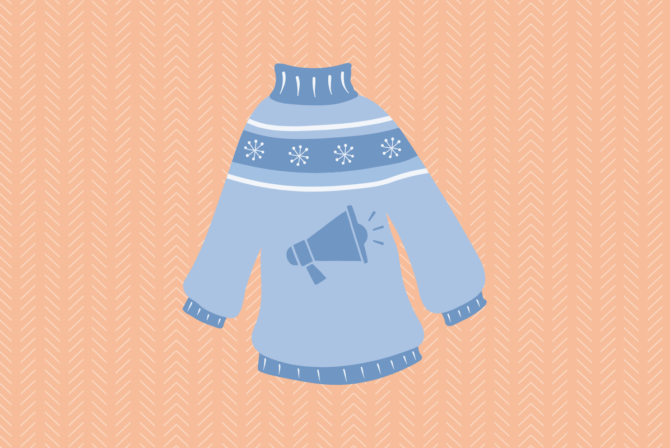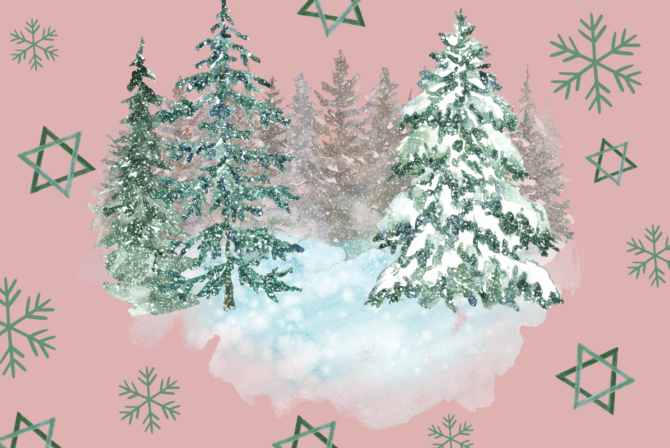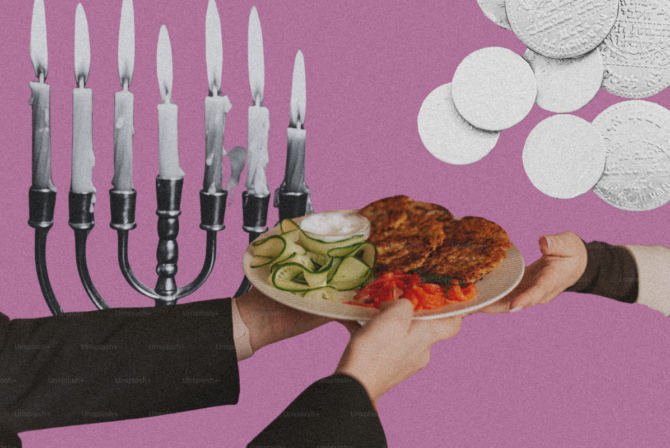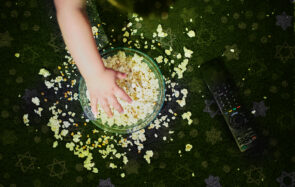
Playing trumpet on the Arsenio Hall Show!
Rosh Hashanah has come and gone. It’s 5774. This was a hard New Year, since it’s my first one spending it divorced, but as I wrote about before the New Year, I was blessed to spend it with my ex and our boys and my parents and all in all, it went well.
I don’t really make New Year’s resolutions like some of our Kveller writers did this year, but I found one on the second day of Rosh Hashanah.
Something you may not know about me is that I blow shofar. I was a trumpet player in elementary school and throughout junior high school and when Temple Israel of Hollywood, my childhood synagogue, got a new rabbi when I was about to become bat mitzvah, this rabbi whose name is John (yes, John, not Jon) Rosove told me he saw me on The Arsenio Hall Show playing trumpet. He told me if I can play trumpet, I can blow shofar.
So I did. I have blown shofar just about every year since I was 13 years old thanks to Rabbi John’s encouragement. I was raised in a Reform shul and spent my college years at UCLA Hillel, so the notion of a woman not being halachically (according to Jewish law) “allowed” to blow shofar never occurred to me. I blew shofar every year through college and graduate school except when imminently expecting my first son and recovering from birthing my second. And I didn’t blow shofar last year because of my injuries from my car accident.
It has occurred to me in the past few years that the Judaism I now affiliate with (Orthodoxy, with a special affection for Modern Orthodoxy and what is called “Open Orthodoxy” if you want to get super technical) has yet to “allow” women to blow shofar. I am not here to debate that or to insist that halacha is wrong or to anger feminists or to speak against Orthodox Judaism. If you want to look it up or debate it, you are free to. I have my own issues with a lot of it, don’t you worry!
Leaving debate aside, I have decided to share that my shofar blowing this year was particularly meaningful for me and, hopefully, for the small but devoted congregation I sounded the shofar for. My sons and ex and my parents were there for the morning shofar blowing, and although my younger son is sound sensitive and was afraid of how loud it would be, he ended up loving it and they all loved it and shepped nachas (received joy/pride) and it was all good in the neighborhood.
I stayed with a friend for the extensive Musaf service after Shaharit which ended at 3 p.m. and consisted of four more sessions of shofar blowing. You should know that it is pretty grueling to blow shofar, and not just because of the tiny embouchure required and the amount of blasts and the types of blasts I have to sound (there are four: tekiyah is about eight beats, shevarim is three blasts of about three beats each, truah is at least 10 tiny blasts, and tekiyah gedolah is as long as you can hold it).
It is a tremendous mitzvah, and there is a tremendous sense of responsibility to be Baalat HaTekiyah–the owner of the blasts, as it were. Everyone likes to hear shofar, and if the shofar sounds good, people feel good. If it sounds bad, people feel bad. Sure, the congregation knows it’s hard and most of them tell me they couldn’t do it if their life depended on it and they are all nice Jews doing their best to be especially nice on Day One and Two of the brand New Year. But still, it’s a lot of pressure. And I know it.
I wear a kittel (white robe worn for High Holiday services) for yontif (holiday). (Great story: when I decided I wanted to wear one a few years ago, I went to the Judaica store and had to pretend I was buying it for a man. When the salesman asked me how tall he was, I stammered…”Um…about my height.”) I recite the blessings with the nusah (prayer melody) for yontif, and I pray privately that I be given the strength to represent my people with the mighty shofar whose sounds we have listened to for thousands of years, even at the Revelation at Mount Sinai. You’re nervous for me now, too, right!?
I realized that blowing shofar is a lot like life. Huge expectations. Huge potential. Big results, and the possibility for epic bombing. And there are the physical limitations: can my lips and cheeks and diaphragm hold out? What if I can’t physically do it? I mean, there is only so much one woman’s anatomy can do, right? My injuries from over a year ago have left my right hand and arm still limited, and I felt fatigue and muscle weakness the whole time as I held up my great big shofar. I hadn’t expected to be reminded of my accident so acutely as I stood before God and my rabbi and my family and my congregation.

This is what my shofar looks like.
Well, this year, I acknowledged the reality of the physical limitations. I looked them square in the eye and put one foot in front of the other. I took each set of blasts as their own novel, their own prayer, their own song. I did not catastrophize what was to come; I did not focus on the fact that the final blast during the final reader’s Kaddish contained yet another Tekiyah Gedolah. I took them one chunk at a time.
And each time I stood on the bimah, I covered my head with my tallis (prayer shawl) for more “privacy” as it were, and to feel embraced and wrapped up in God’s presence. (For a fantastic little poem about the power of being wrapped in the tallis, check out this poem by Yehuda Amicha). As I stood on the bimah, I knew my heart was pure. My intentions were pure. I loved every second of it not for some ego gratification, but because I was alive and present of mind to experience it and love it, in all of its beauty and tension and complexity. Like life.
As my lips fatigued, the blasts changed, as they are wont to do. The shevarim blasts started to have two levels to each blast; I had to work harder to “kvetch out” the truah blasts, and the tekiyahs had a sharp burst at the end of each because I knew that I wanted them to still have power and impact even though I wasn’t as strong as I had been earlier in the service. The tekiyah gedolahs were not as long or strong as I wanted them to be, but such is life.
Such is life.
My rabbi, the man who has been my mentor and my guide and my inspiration to pursue a Judaism of truth and halachic rigor and honesty thanked me and told the congregation that this year, you could actually feel the shofar, and not just hear it.
Wow, I thought. I conveyed something new this year. Because I’m new this year. We’re always changing.
The rabbi thanked me personally and told me how clear the shofar sounded this year. Ever self-deprecating and Eeyore-like, I responded without missing a beat, “My life should be so clear this year.”
Amen. This is where I found my sort of resolution: my life should be as clear as my shofar blasts were this year. And as focused and forward-looking. And my intentions should be as pure every day as they were this Rosh Hashanah as I stood under my tallis to execute and own the cries and the shrieks of the call to war, or a woman in labor, or the grief of Sarah when she heard that Abraham was going to sacrifice her beloved son on the altar, and the hopes and dreams of the men and women and children whose ears heard and felt the shofar this year. That’s what the shofar blasts mean. All of it.
So whatever you wish for this year, know that there are limitations: physical ones, psychological ones, spiritual ones. But all we can do is return and return again, wrapped in whatever safety we can grab onto; devoted to try again to find something beautiful and meaningful.
And the Purity of our existence is sometimes all we can come back to. In short blasts and long ones, attempts at longevity, failures and repairs. As a child, Rabbi Rosove had the congregation recite the following line before I blew the shofar: “I am the shofar. Listen to me.”
As Yom Kippur ends, find a synagogue and hear the final shofar blast even if you don’t go to shul all day. Listen to the shofar. Find clarity. Find purity. Find revelation. Because it’s there.
I know it. Because I have stood at the base of the mountain, and I have heard it.
Love Mayim? Get her latest blog posts delivered straight to your inbox.







